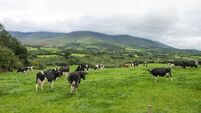Paying to drive into Cork, Limerick, and Waterford: Are congestion charges realistic in Ireland?

Traffic in Cork city centre. A report predicts that if motorists are charged a €10 congestion charge to drive into the cities of Cork, Dublin, Galway, Limerick, and Waterford, and if parking charges are increased by 400%, Ireland could see a 50% reduction in carbon emissions from transport by 2030. Picture: Larry Cummins
A modelling report by the National Transport Authority (NTA) published in spring this year predicted that if motorists were charged a €10 congestion charge to drive into the cities of Cork, Dublin, Galway, Limerick, and Waterford, and if parking charges were increased by 400%, Ireland could see a 50% reduction in carbon emissions from transport by 2030.
The report, published as part of the Climate Action Plan 2023, notes that other behavioural changes would also be needed to achieve this target, including an increase in working from home, a reduction in car ownership, and a more reliable public transport network.














